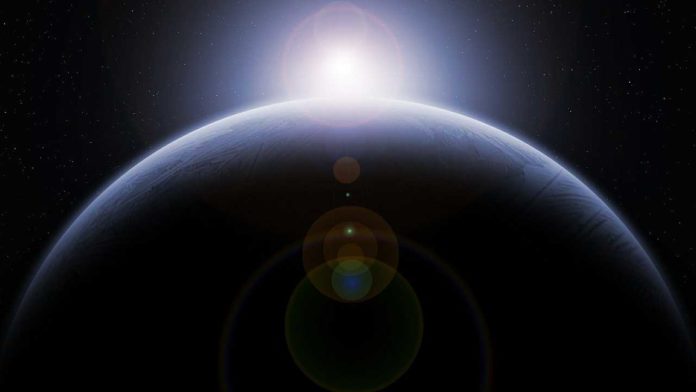Earth’s oxygenation is an increase in the concentration of atmospheric molecular oxygen (O2). Larger amounts of atmospheric oxygen became possible because of shifts in the competition between oxygen production derived from photosynthesis and the rate of oxygen consumption by various geological processes.
Earth’s modern atmosphere is a remotely detectable signal of its surface biosphere. However, the lifespan of oxygen-based biosignatures in Earth’s atmosphere remains uncertain, particularly for the distant future.
A recent study found the answer to this. Using a numerical model of biogeochemistry and climate, scientists from the Toho University reveal Earth’s oxygen-rich atmosphere’s future lifespan.
Knowing Earth’s oxygen-rich atmosphere’s future lifespan has great ramifications for the future of Earth’s biosphere and the search for life on Earth-like planets beyond the solar system.
The study reveals that the future lifespan of Earth’s oxygen-rich atmosphere is approximately one billion years.
Kazumi Ozaki, Assistant Professor at Toho University, said, “Indeed, it is generally thought that Earth’s biosphere will come to an end in the next 2 billion years due to the combination of overheating and CO2 scarcity for photosynthesis. If true, one can expect that atmospheric O2 levels will also eventually decreases in the distant future. However, it remains unclear exactly when and how this will occur.”
Scientists examined how Earth’s atmosphere will evolve in the future. For this, they built an Earth system model which simulates climate and biogeochemical processes. Because modeling future Earth evolution intrinsically has uncertainties in geological and biological evolutions, scientists adopted a stochastic approach. This allowed scientists to obtain a probabilistic assessment of the lifespan of an oxygenated atmosphere.
Running the model for more than 400 thousand times by varying model parameter, scientists found that Earth’s oxygen-rich atmosphere will probably persist for another one billion years (1.08±0.14 (1σ) billion years) before rapid deoxygenation rendered the atmosphere reminiscent of early Earth before the Great Oxidation Event around 2.5 billion years ago.
Ozaki said, “The atmosphere after the great deoxygenation is characterized by elevated methane, low-levels of CO2, and no ozone layer. The Earth system will probably be a world of anaerobic life forms.”
The study suggests that Earth’s oxygenated atmosphere would not be a permanent feature. The oxygen-rich atmosphere might only be possible for 20-30% of the Earth’s entire history as an inhabited planet.
Journal Reference:
- Ozaki, K., Reinhard, C.T. The future lifespan of Earth’s oxygenated atmosphere. Nat. Geosci. (2021). DOI: 10.1038/s41561-021-00693-5
